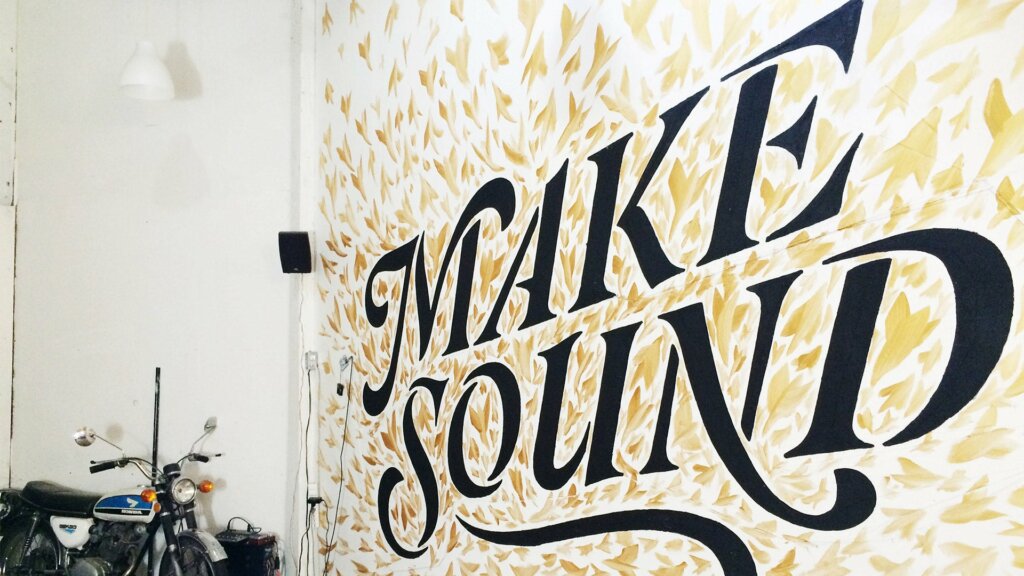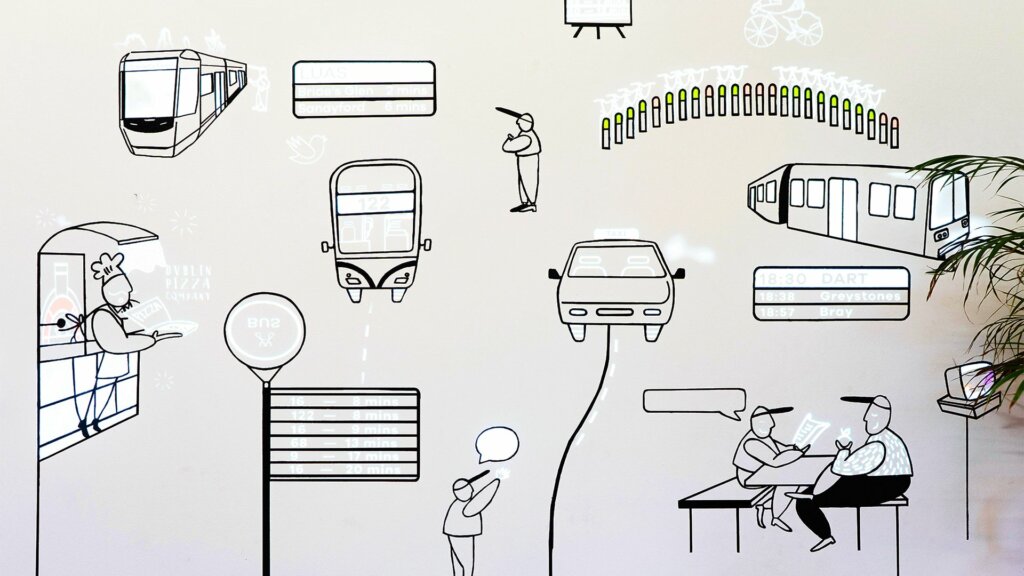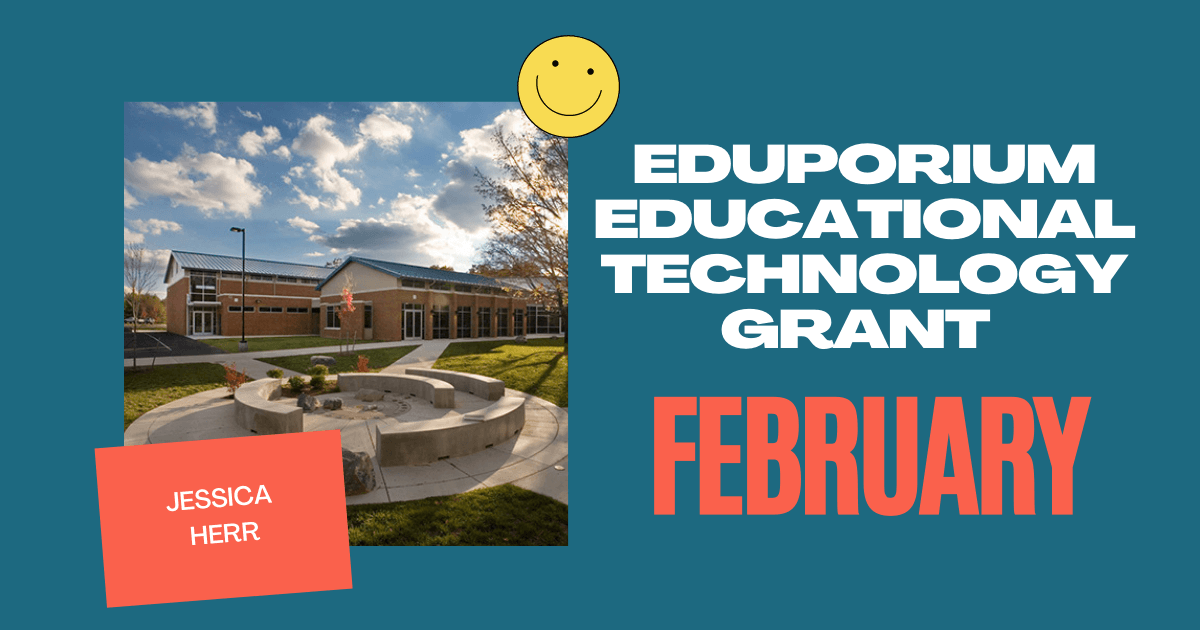We've presented our EdTech grant award for February 2022 to Jessica Herr from the Stanton City Schools. Jessica is an administrator in the Staunton City School System, working primarily with high school students. She serves students throughout the entire school district, including helping to create innovative STEAM learning opportunities. To that end, her plan for using the technology grant materials we'll provide involves designing a large, interactive mural for all members of the school community to enjoy. So, how will they do it? Here's how the plan is taking shape.
Like many educators, Jessica believes strongly in the power of community. She's also seen, however, that it's not always easy to achieve across-the-board excitement for some initiatives. That's why, in this project, she's going to focus on extending student collaboration—particularly across disciplines. With the project she has planned after receiving her EdTech grant materials from us, Jessica will be leading an integrated effort to design and build an interactive mural all while helping to foster a love for lifelong learning. Appropriately, she's dubbed this project 'Sense of Wonder' and it's going to involve a joint effort. Her AP art students will be working closely with computer science and engineering students to get it functioning.

Jessica is designing the project to catalyze student inquisitiveness and promote positive learning experiences regardless of their ages. Drawing on the inner desire to be 'wowed,' she's hoping to show students how even the simplest and smallest things can leave them feeling a sense of awe and fascination. Even in high school, she knows students still have the natural curiosity of children. So, to help spark some positivity around their school district, give back to the community, and embrace the productive struggle, she came up with the idea for creating an interactive mural. And, we're happy to help her and her students along the way.
Jessica applied for our EdTech grant to help make this project possible. She also hopes to inspire students to feel a greater sense of pride in their creations and community contributions. There are three phases to the project, which the students should be able to begin soon. Phase 1 is the design phase—dedicated to designing the interactive wall structure for eventual display in a public area. During this phase, Jessica plans to focus on social-emotional development and boosting academic success as a result. Of course, with such a renewed focus on SEL in education these days, this is a perfect combination.
Phase 2 will involve art students creating the art work for the mural. They'll begin with the visual portion of the mural before passing it on to the computer science students. Jessica's vision includes AP art students using a variety of bright colors to create a visually stunning work of art. That's where our contribution comes in—students will strategically be using conductive paint as they create the mural and leaving space to add interactive features once they're ready to do so. Once layered onto the mural, students will be able to use the Bare Conductive Electric Paint they receive through our EdTech grant program to incorporate interactivity and, eventually, programmable features.
Once the art students finish painting and everything is dry, the'll pass the project on to the computer science students. They will be making the mural come alive by utilizing their skills to add circuitry and programming to the mural. Jessica sees them collecting sounds bites to contribute to the mural's interactive features as well. Students will be working with younger children in the district (Pre-K and kindergarten) to record various pieces of sound to feature in the final mural. Once they have that done, they'll be ready to get deeper into the programming and computer science.
In Phase 4, the computer science students will begin the engineering process. This will involve connecting multiple components from the Bare Conductive Interactive Wall Kit so they can incorporate circuitry and programming elements. They'll be connecting various components, like electroid shields, pads, and circuits to the main Touch Board and speaker and adding in audio feedback features to the mural as well. Finally, in Phase 5, they'll be ready for the grand reveal—showing off the mounted mural for members of the entire school community to see!

For this unique project, we'll be sending our latest EdTech grant recipient Bare Conductive paint and the Interactive Wall Kit. With these materials, Jessica and her students should certainly be able to achieve their project objectives. Those include enabling high school students to use their STEAM talents to give back to the community and help create that Sense of Wonder for younger kids—whether they're some of the ones who helped out or others who will see the mural and feel a new sense of excitement. Ultimately, Jessica hopes to see, hear, and feel that Sense of Wonder from the early education students and high schoolers.
We can't wait to see how this project turns out and we'll share updates once the work is underway. Once again, we thank Jessica for applying for our STEM grant and congratulate her on her selection. You can apply for our next EdTech grant anytime up until March 20. The application for the March award is now open and we encourage you to share it throughout your education PLN. For more updates on STEM, MakerEd, and EdTech, follow us on Twitter and Instagram.



